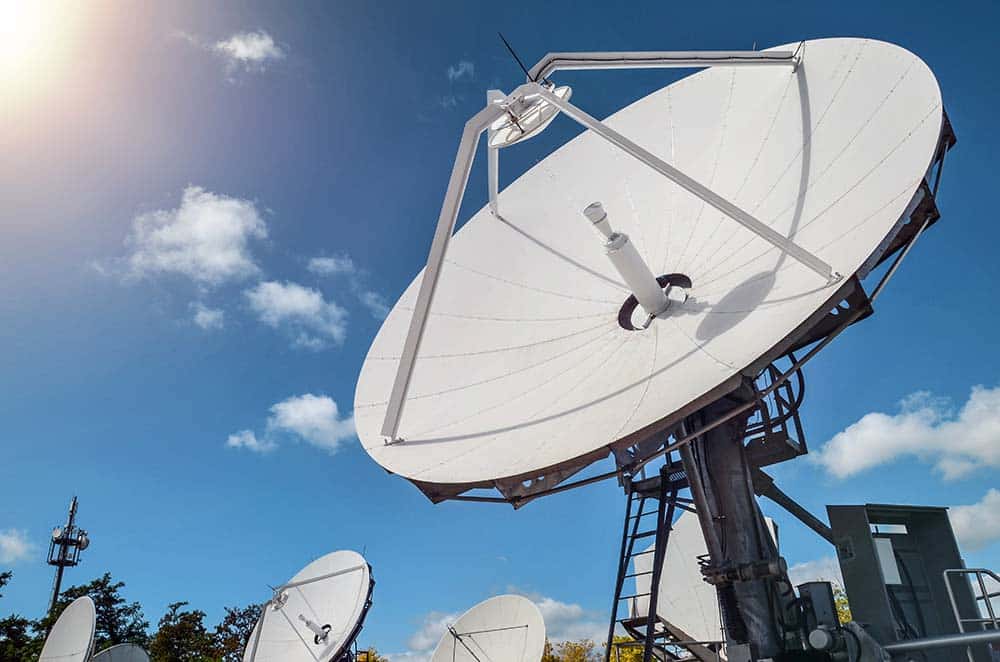In global communications, much of the heavy lifting is done by satellites. Whether in business or for civil institutions, they form the backbone for fast, uninterrupted information transfers, even in the most remote parts of the world. A4X Engineering develops and manufactures telecommunications systems for use “on board” as well as on the ground. Alongside numerous products such as control units and various types of fixed and mobile receiver antennas, the portfolio also includes consulting services, design and realization of technical projects for the aerospace sector.
Aiming for complementary parts rather than a patchwork quilt
For many years, A4X have used products from a wide range of suppliers for the automated control of its large dish antennas on Sicily, Italy, used for satellite monitoring. This custom, composite system environment made global support difficult, for example the urgent delivery of spare parts. A4X sought to address this problem by deploying a more standardized, reliable and cost-effective system that would fulfill two specific operating requirements in particular. First, it was important that the system that controls the servo drives via standard field buses could communicate at the necessary speed with the principal Micro Unit Controller (MUC) used to determine the satellite position and automatically align the dish. Second, the motor temperature range required constant monitoring to guard against overheating. Ecora, the distributor entrusted with handling this specialist task, zeroed in the powerful solutions and services from Delta for this exceptional project.
A complex control and communication challenge
Automatically tracking a satellite with a parabolic antenna is a complex task. To start with, the target satellite must be located “by hand” using specialist software. Details of the objective are then handed to the MUC, which calculates the correct position on the ground in terms of azimuth and inclination on the basis of the absolute position expressed as a longitude and latitude, also taking account of the Doppler effect. The processor must also then calibrate the antenna by computing additional factors such as the position of the sun and magnetic north. Finally, the appropriate measurements are sent by the MUC to a programmable logic controller (PLC) via Ethernet/IP. The computing process and servo system must interact quickly and accurately when automatically aligning the dish to achieve the highest resolution motion possible.
A single source for core hardware and software
There were several reasons for choosing solutions from Delta. Alongside its large portfolio, it also has in-depth expertise in the design and implementation of electronic automation systems, allowing it to meet the most exceptional requirements. These advantages also came into play in the unique project involving Ecora and A4X. Delta and Ecora were able to put together the hardware and software specifically required to update the control system entirely.
The duo selected two 5.5 kW type ASD-A2-5543-M servo drives to align the antenna on the azimuth axis, alternating for counter torque, while a third drive of the same type sets the dish elevation. The motor that had previously been used for this offered lower power. However, Delta decided to fit the same, powerful models on both axes to minimize the spare parts requirement.
Switching and communications are handled by an AS332P-A PLC, which is connected to the MUC via Ethernet. Communications between the PLC, Fieldbus and the motors use the CANopen protocol. A DOP-107H programmable touchscreen HMI unit was installed to provide a local and direct manual input option, connected via Modbus TCP. The service package was complemented by web-based training that gave the system integrator insights into the underlying CANopen functionality.
Improved performance and future projects
Initial post-installation testing directly examined the new system’s increased performance. The motion resolution was not only significantly higher than the old system, it even exceeded the previously calculated and expected values. A4X has awarded two more projects as a result of these findings. The same system will now be installed on one ten-meter and one 15-meter parabolic antenna. “The full Delta offerings from hardware, software and technical support, as well as expertise in automation systems, convinced Ecora and A4X across the board,” said Daniele Milanato, field application engineer, industrial automation, Delta Electronics EMEA region. “We are extremely satisfied with the considerably improved results and we look forward to the upcoming joint projects with Ecora and A4X.”
